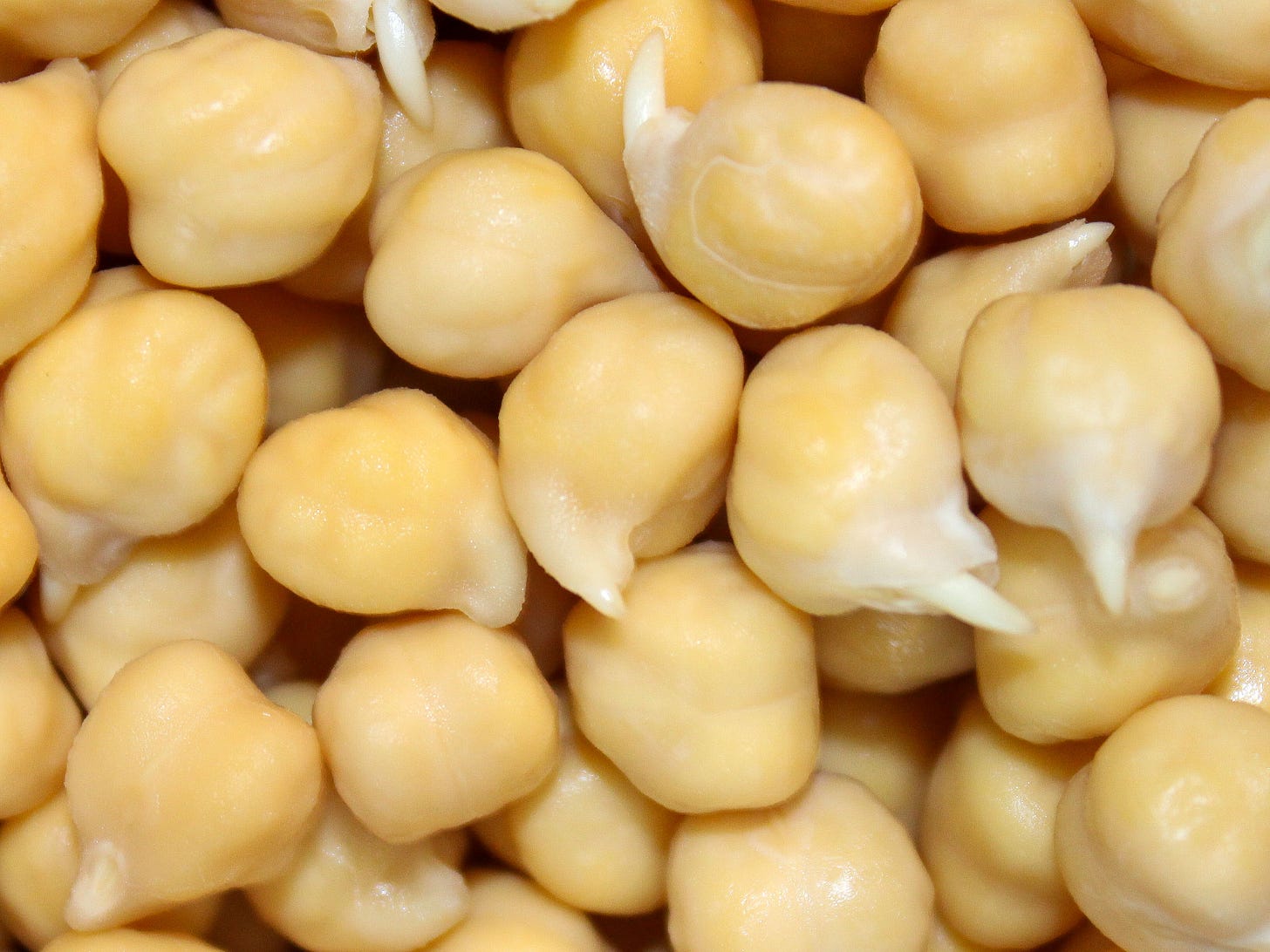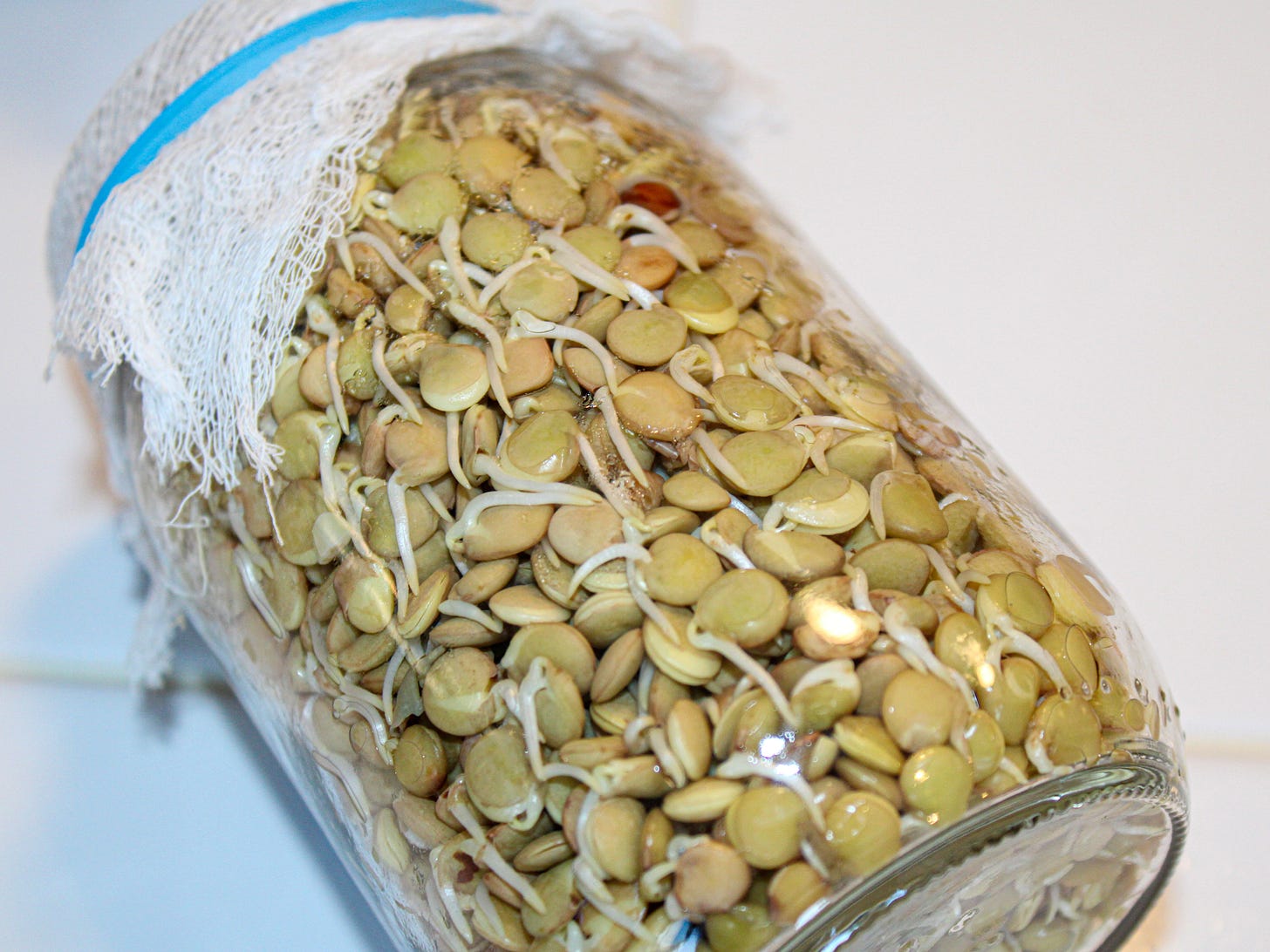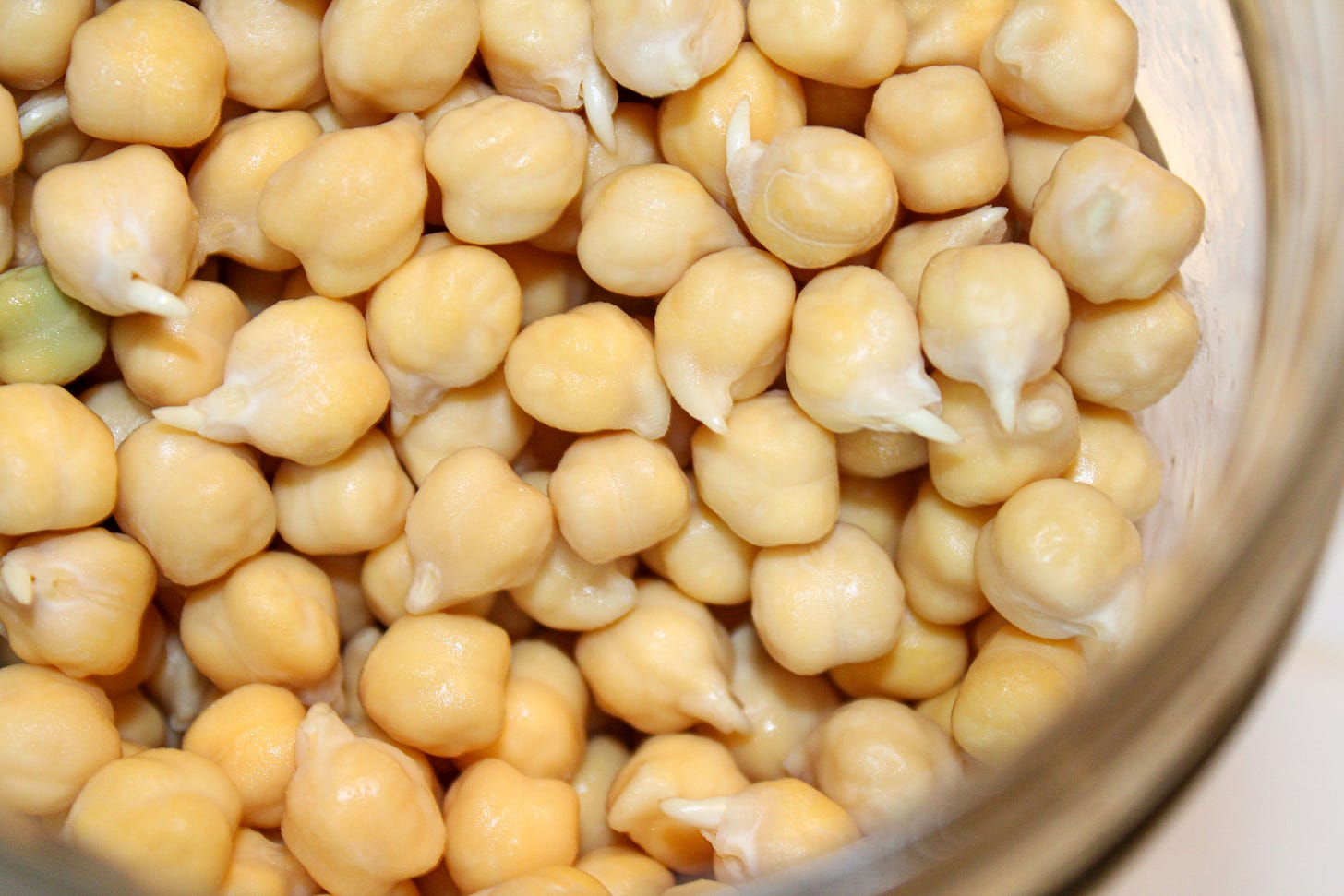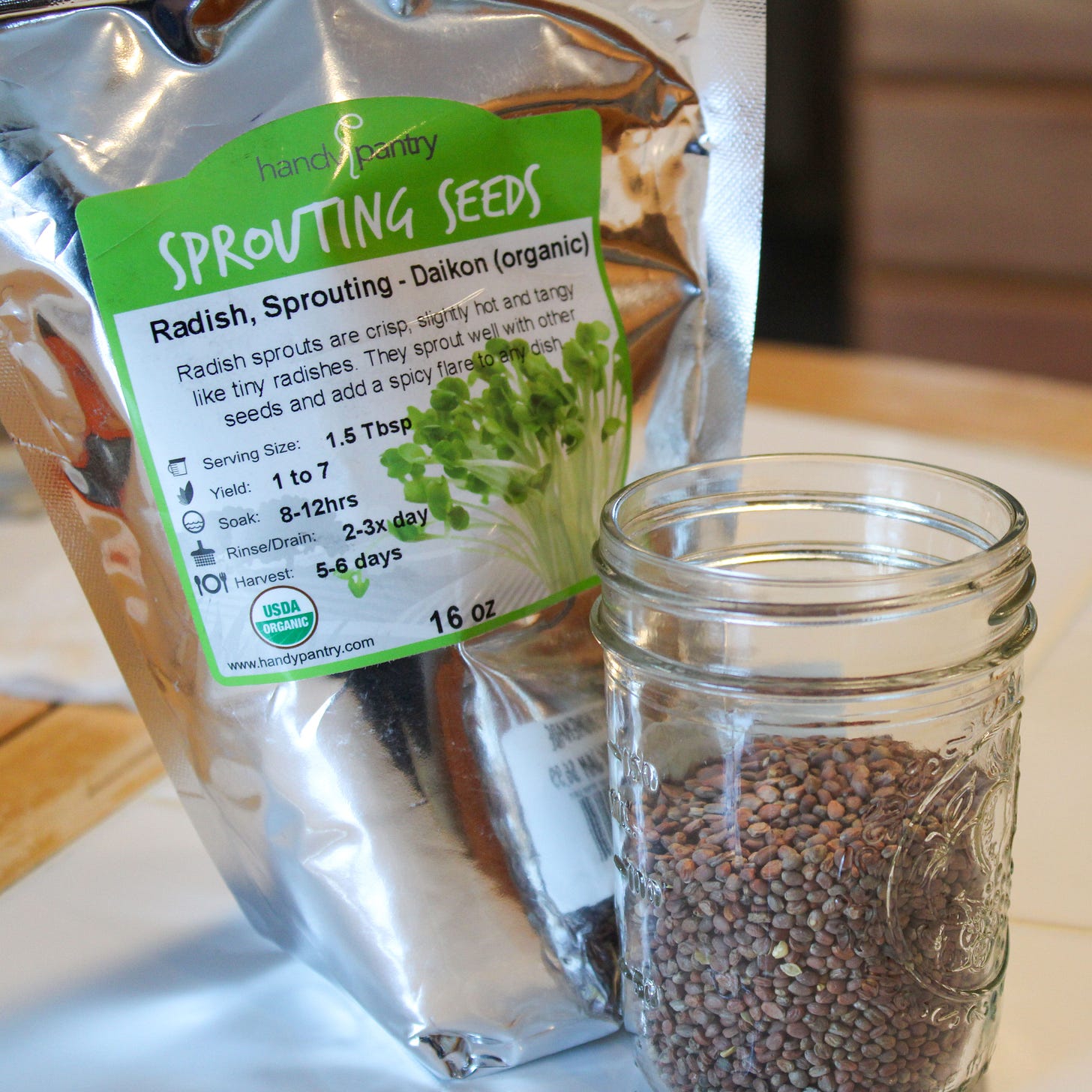The Garden in Your Kitchen - Part I
Granny probably never made, or possibly ate, a sprout in her life. But, if she’d known about them she might have gone hog wild. Particularly before refrigerated transport, getting fresh food in the winter was difficult, entailing greenhouses and cold frames and what not. But she wanted fresh food as much as we do!
Granny would have been delighted to learn it takes no special equipment outside of a glass jar and lid (keep some instead of recycling), some cheesecloth, rubber bands, and some seeds you want to use.
To make… SPROUTS.
Yes, sprouts! Often you’ll find mung bean sprouts in a Chinese dish, but they are far, far from my favorite sprouts. I love radish sprouts, lentil sprouts, and chick pea (garbanzo bean), dill, pea, and parsley sprouts much more. If you love Cilantro, you’ll enjoy cilantro sprouts! I won’t turn down mustard, parsley, sunflower, turnip, or red clover sprouts, either. Actually, I’ll eat them all, but I do have my favorites.

In a so-easy-to-do-a-child-of-five-can-do-it level of complexity, sprouts are the ultimate “spruce up your menu/nutrition cheaply and easily” project. Buy seeds in your grocery store. Use a wide mouth glass jar you’d otherwise recycle. High sided metal pans and plastic containers also work, but for the sheer joy of sprout growing, glass jars are the best. You can so easily peek and see them growing!
If you have kids or grandkids, sprouts are a fabulous bonding and learning experience. They’ll see, in glorious detail, that the root always pops out of the seed first. It’s called a “radicle” if you’re in the mood to sound wise. It’s first, always.
Learning and bonding experience aside, any delighted humans of any age start their sprouts and wow! Often within 48 hours you’ve got them ready to eat. A perfect winter pick-me-up for bored kids (and adults) – and they happen so quickly that children don’t lose interest.
Benefits of Sprouts

Sprouts are powerhouses of nutrition. Sprouts are high in vitamins, minerals and – in some cases – protein, while being low in calories and fats. High fiber, too.
Why? Seeds are the powerhouses of life. Plants make seeds in hope of their future generations and they put every single molecule of goodness they can muster into that spaceship into the future. The plant can make its own food, get more food from outside sources, and the plant uses ALL of those to pack those seeds with every single thing they can imagine might help that seed survive – and breed again. Thus the nutrients in seeds far outweigh their larger counterparts; you will need to eat a pound of spinach, say, to equal the nutrient load a teaspoons or two of sprouted spinach seeds will provide. In fact, sprouts may give you well more than you’d get from the plant because the sprouts have broken down the completely indigestible material as well as cooking does because the seeds, given water, produce enzymes to break down material so that the little seed can use it. At the same time, since they’re not cooked, they maintain all the vitamins, including those destroyed in any cooking process.
Wow.
If that were not enough, sprouts can help digestion. They can improve the levels of “good” bacteria in your gut and decrease the flatulence (bloating and gas). Hurrah!
Diabetics may find sprouts help to control blood sugar levels, because sprouts have lower levels of carbohydrates than most grains and, since they contain natural enzymes to break down the material, they can positively affect how carbohydrates in the diet are managed in your body. Hurrah!
Sprouts often contain valuable antioxidants and other cancer – preventative compounds (broccoli sprouts impress the medical field, and they’re just the ones tested for this). Hurrah!
Let’s Make ‘Em!
Hard to beat all that, particularly since anyone – even a young child – can make them. All the necessities for sprouts can be found in your grocery store. While it’s nice to have mason jars for your sprouts, any good wide mouthed jar that’s clean – very clean – is wonderful for sprouts. Cheesecloth is generally available in the baking section where kitchen equipment is found.
All you have to do is get out your impeccably clean wide mouth glass jar and lid (or your metal pan, or boring plastic container), your seeds that you want to sprout, and some water (you can use tap water; purified water will result in healthier sprouts, but is not necessary), and ready, set, go!
Place a bunch of seeds you wish to sprout in the jar (or whatever). Try not to pass 2/3 full. No measuring needed. Who cares? Perfect for kids and the kid in all of us…
Use water to the fill jar with seeds almost to the top and put the lid on it.
Shake the jar vigorously.
Put the jar in a dark place; closets and cupboards are perfect.
Next morning (or evening if you started in the am), rinse the seeds again – all you have to do is loosen the lid and tip the jar to pour the water out, fill the jar with water again, then get ready for real fun. Remember – some seeds need more soaking than others; as a rule of thumb, the larger the seed the longer the soaking. Small seeds are usually fine with a 12 hour soak; larger seeds can often use 48 hours, simply for the seeds to absorb all the water they can.
Now you loosen the lid and pour out the water the seeds have soaked in and that you washed the soaked seeds in, and place your cheesecloth over the top of the jar with a rubber band (SAVE the lid), and put the jar in the dark spot again.
Day after that, take the jar out again and pour the water off through the cheesecloth. THEN, keeping the cheesecloth in place, fill the jar with water – through the cheesecloth – and AGAIN pour the water off through the cheesecloth. Try not to leave water in the container. It can create molds and other problems. Pour off every bit that you can! You just need to wet the seeds. Repeat once or twice a day until your sprouts are ready to eat.
Repeat for 48 hours or several days until you see the seeds sprout their roots. This is where glass jars rule the roost. You can look right at the little sprouts. It’s such fun. Kids love this, too.
Sprouts are here! You can repeat the rinsing process as often as you like to encourage more seeds to sprout or roots to grow longer, but if you’ve got a whole jar of them, go on to finish the project.
Once you’ve got your seeds all nicely sprouted, rinse and pour off the water one more time – and place the sprouts you don’t eat just then in the refrigerator to use later. Up to you how big a root you really want. You can let them grow until they’re quite long, or munch them as soon as they sprout. But, when they’re long enough, it’s time for the next step, which is to place those you haven’t eaten in the fridge to stop them growing. This is why you saved the jar’s lid!

Some special notes
Some seeds can use a long soak. Most only need 1/2 to a day of soaking before draining off water and starting the sprouting process, but chick peas (garbanzo beans), mung beans, and green peas can use 2 days (48 hours) of soaking.
DO NOT attempt to use pinto beans or most other beans for this activity unless you plan to cook the sprouts. Those beans can be quite poisonous if not cooked. Mung Beans can be eaten raw, but, like other beans, it’s a good idea to cook them lightly. A “blanch” serves to cook the beans once they’ve sprouted. Simply immerse them in boiling water for roughly a minute, then drain and wash them immediately under cold water to stop the cooking process (this maintains their crunch and flavor). Or, just toss your sprouts in a stir fry or other meal you’re preparing. Most beans sprouts will add a great deal more flavor to your dish than unsprouted (ALL dried beans need soaking and cooking prior to eating, anyway).
Other sanitary procedures
Always wash your hands prior to handling sprouts.
Keep ready to eat sprouts in your refrigerator. Like all fresh food, sprouts can be attacked by all sorts of horrors left unattended on your counter. We want fresh, healthy sprouts, not rotten.
Rinse the sprouts you intend to eat the same way you’d rinse any produce prior to eating.
Never consume tainted sprouts – if they’re slimy, off color, or stink, put them in the compost. Sprouts are so fresh that they can go “off” quickly, which is why you very seldom see them for sale in a grocery store. Sprouts will do fine in the refrigerator for 5 days to a week.
What To Buy
Some good seeds to sprout are easily found in grocery stores. You can freely buy and sprout them because they’re NOT treated. Other seeds should be purchased from a reputable source (some are listed below). Make sure the seeds are labelled for sprouting or microgreens. Any seeds that can be eaten as a microgreen can be sprouted; you will achieve at least the nutritional value of the microgreens, and likely, more; microgreens lose the nutrients the plant stored to make that first root, the “radical.”

Since a trip to the grocery is a necessary chore, why not start your sprouting hobby with those seeds easily available there? Your grocery is likely to carry lentils, garbanzo beans (chick peas), beans (cook the the sprouts!), and, every so often, dried peas. Peas are generally in stores as “split peas,” and, as you’ve guessed, once you split them they won’t sprout. However, some good groceries will still carry dried peas so you can make pea soup, not necessarily split pea soup. ALL of these sprouts are powerhouses of nutrition.
Other, just as easy to make (and often thought even more delicious) seeds to sprout include – but are not limited to – dill, radish, beets, broccoli, cabbage, arugula, mustard, cilantro, spinach, parsley, sunflower, turnips, mung beans, corn, kale, lettuce, red clover, Swiss chard, alfalfa, romaine, fenugreek and kohlrabi. As said, anything you can find sold as a microgreen seed is fair game for your sprouts; microgreens are a big fad right now, there are lots of great seeds available. All of these are nutritious and flavorful.
There are even good grains that can be sprouted. Wheat, barley, oats, rye, millet and spelt are often on the table in homes that love sprouts. Most grains sold in the grocery have been treated in some way to make them easier to cook that will prevent them sprouting.
It’s easy to get great seeds to sprout online (remember, sprouts are very perishable, but seeds can last for years until you’re ready to use them). Look for untreated seeds. There are lots of sites online with a whole range of great seeds.
Want to get fancy? There is a lot of cool sprout equipment on the internet. From classy covers that allow you to skip the cheesecloth/rubber band step, to special trays that will keep the roots from curling around; the joy of playing with new toys abounds.
Yay! Fresh and nutritious food even in the middle of winter!
Good sources for seeds: you can get garden seeds and microgreen seeds here, too.
Johnny’s Selected Seeds - johnnyseeds.com
True Leaf Market - trueleafmarket.com (a great source for grain seeds)






